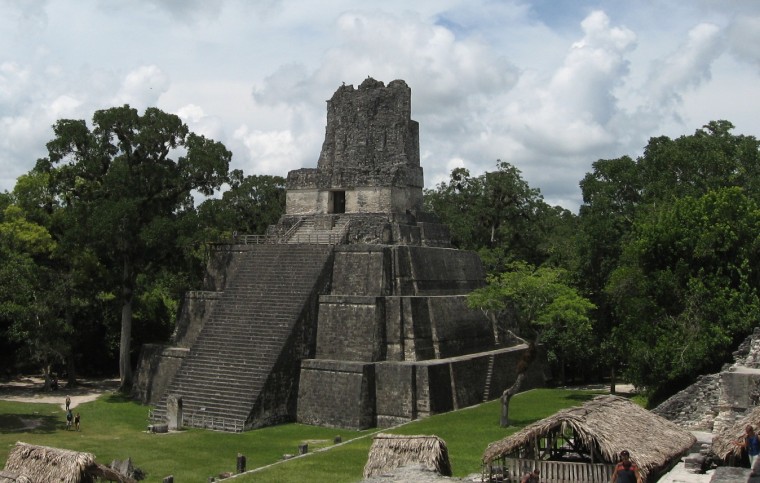As the planet's climate changes, humans everywhere should brace for a spike in violence, a new study suggests. Civilization as we know it may even be at risk.
The dramatic finding comes from a synthesis of several dozen studies that examine the relationship between climate and conflict. The studies cover most regions of the world and points in time over the past 10,000 years. Across all, the findings are consistent: changes in temperature or rainfall amplify violence.
"As long as future populations continue to respond to climatic events the same way … we should probably expect an amplification of interpersonal and intergroup conflict moving forward," Solomon Hsiang, a public policy researcher at the University of California, Berkeley, told NBC News.
The underlying mechanism for the causal link is unclear, he and colleagues note in the paper published Thursday in Science. Theories range from the psychological effect of hot temperatures making people testy to drought destroying crops, which erodes local economies and raises unemployment.
"It is easier to start a riot when there are lots of young men around who have very little to do, who are not participating in the formal economy," Hsiang said.
Mark missed?
The research, he noted, is intended as a rigorous approach to the question of what — if any — role climate plays in human conflict in order to advance the debate beyond the question of a link to the development of policies that can break the linkage.
"The purpose of the study is ambitious and good," Halvard Buhaug, the research director at the Peace Research Institute in Oslo, Norway, told NBC News in an email. "Unfortunately, it falls short of its target and the sweeping conclusion does not hold water."
Among his criticisms is wide disagreement among the studies analyzed: A third, he noted, fail to show a statistically significant effect of climate on conflict and those that do disagree on the relationship — too much rain, or not enough, as increasing the risk of conflict, for example.
What's more, he said, the paper lacks case studies of real conflicts from modern times that were caused, at least in part, by climate extremes.
"If a general and strong causal link has been established beyond reasonable doubt, as the authors claim, I would expect them to be able to point to at least a handful of recent armed conflicts where unusual fluctuations in climatic conditions played a central role," he said.
Future warning
Hsiang holds firm to the analysis, which weeded out hundreds of papers because their quality was insufficient and open to biased interpretation. The few dozen that met the team's criteria were then reanalyzed and paint a consistent picture "that leads to a much stronger conclusion," he said.
The team uses a measure of how different a climate is relative to normal, called standard deviation, to compare different regions of the world, which have different climates.
A standard deviation of one, for example, corresponds to a month in New York that is 5.4 degrees Fahrenheit warmer than normal or a year in Nigeria that is 0.7 degrees F warmer than normal. This translates to a 4 percent rise in interpersonal violence, such as domestic abuse, and a 14 percent jump in intergroup conflict, such as civil war.
By 2050, most parts of the world are expected to warm by 2 to 4 standard deviations. "That suggests that we could potentially have a dramatic increase in violence, particularly in the form of intergroup conflict … it could be in excess of 50 percent in some regions," Hsiang said.
Such intergroup conflicts underpinned by changes in climate have been linked to the collapse of civilizations around the world, including the Maya between the 8th and 9th centuries and China's Ming Dynasty in the 17th century, which experienced prolonged droughts at the time of their demise.
"Many populations in the modern world," Hsiang noted, "actually exhibit a similar level of economic development that those historical populations had at the time of their collapse."
John Roach is a contributing writer for NBC News. To learn more about him, visit his website.
